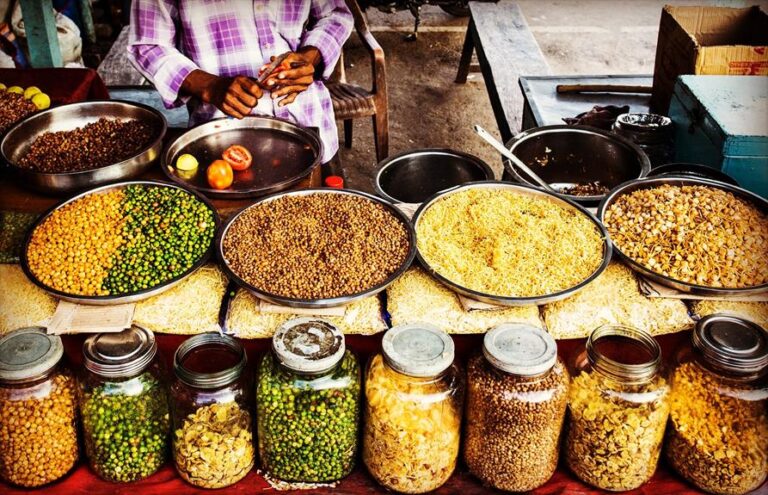With each sip, a well-brewed beverage can transport us to a world of flavors and aromas. From the robustness of coffee to the delicate infusion of tea, brewing is a timeless art that tantalizes our senses.
In this article, we will embark on a journey through the fascinating realm of brewing, exploring the diverse range of items that fall under this category. Join us as we unravel the secrets behind perfect coffee brewing methods, beer craftsmanship, tea varieties, and even the creation of exotic potions.
Get ready to savor the essence of brewing.
Key Takeaways
- Cold brew coffee offers a smooth and less acidic taste, and is less bitter with a subtle sweetness.
- Brewing espresso requires finely ground coffee and an espresso machine, with the right balance of grind size, water temperature, and brew time being key to extracting flavors and aromas.
- Different tea brewing methods affect the concentration of antioxidants and flavors, with green tea often brewed at lower temperatures to preserve delicate flavors and black tea steeped in boiling water to release bold flavors.
- Kombucha brewing produces a fermented tea drink rich in probiotics and antioxidants, which promote gut health, digestion, and immune system function.
Coffee Brewing Methods
There are various coffee brewing methods available for preparing a cup of coffee.
One popular method is cold brew coffee, which offers several benefits. Cold brew coffee is known for its smooth and less acidic taste compared to traditional hot brewed coffee. It is also less bitter and has a subtle sweetness. To make a perfect cup of cold brew coffee, start by combining coarsely ground coffee and cold water in a container. Let the mixture steep for 12-24 hours in the refrigerator, then strain out the coffee grounds.
Another popular method is brewing espresso. To brew the perfect cup of espresso, use finely ground coffee and an espresso machine. The key is to achieve the right balance between the grind size, water temperature, and brew time to extract the rich flavors and aromas of the coffee.
Brewing Techniques for Beer
One of the primary brewing techniques for beer involves the use of a specific number of ingredients and a precise brewing process. Here are three key elements of beer brewing:
- Mashing: This is the process of combining malted grains with hot water to extract fermentable sugars. The grains are crushed and mixed with water at specific temperatures to activate enzymes that break down starches into sugars.
- Boiling: After mashing, the liquid, known as wort, is boiled. Hops are added at different times during the boil to impart bitterness, flavor, and aroma to the beer. The boiling process also sterilizes the wort and helps to clarify it.
- Fermentation: Once the wort has been cooled, it is transferred to a fermentation vessel and yeast is added. The yeast consumes the sugars in the wort, producing alcohol and carbon dioxide. This process typically takes one to two weeks.
Different Types of Tea Brewing
Various methods are employed to brew different types of tea. Each method brings out unique flavors and aromas, resulting in a perfect cup of tea. Understanding the science behind tea brewing is essential to achieve the desired taste and health benefits.
Different types of tea brewing, such as steeping, boiling, or using a gaiwan, can affect the concentration of antioxidants and other beneficial compounds. For example, green tea is often brewed at lower temperatures to preserve its delicate flavors and maximize its health benefits, while black tea is steeped in boiling water to release its bold flavors.
The health benefits of tea brewing are well-documented. Tea is known for its antioxidant properties, which can help reduce the risk of chronic diseases. Additionally, certain herbal teas, such as chamomile or peppermint, are used for their soothing and relaxing effects.
Exotic Potions That Can Be Brewed
An array of exotic potions can be brewed, each with its own unique properties and effects. These potions have been crafted through centuries of brewing traditions around the world. Here are three examples of exotic potion recipes that have captivated people’s imaginations:
- Love Elixir: This potion is believed to ignite the flames of passion and enhance romantic relationships. It typically includes ingredients such as rose petals, vanilla, and cinnamon, which are known for their aphrodisiac properties.
- Healing Tonic: Brewed using a combination of medicinal herbs and plants, this potion is renowned for its ability to promote physical and emotional well-being. Ingredients like chamomile, lavender, and ginger are often used to create a soothing and rejuvenating elixir.
- Fortune Potion: This mystical brew is said to bring luck and prosperity to its drinker. It incorporates ingredients like mint, basil, and green tea, which are associated with abundance and good fortune.
Exploring the World of Kombucha Brewing
The world of kombucha brewing unveils a myriad of techniques and flavors, captivating enthusiasts with its ancient origins and health-promoting properties.
Kombucha, a fermented tea drink, is renowned for its numerous health benefits. It is rich in probiotics, which promote gut health and digestion. Kombucha also contains antioxidants that help to combat inflammation and boost the immune system. Moreover, the fermentation process produces beneficial acids, such as acetic acid, which may aid in detoxification and weight management.
In addition to its health benefits, kombucha brewing allows for a delightful exploration of unique flavors. From fruity combinations like strawberry and basil to exotic blends such as ginger and turmeric, the possibilities are endless. This allows kombucha enthusiasts to enjoy a refreshing and flavorful beverage while reaping the rewards of its health-promoting properties.
Unusual Things That Can Be Brewed
Continuing the exploration of brewing techniques and flavors, there are intriguing and unconventional items that can be brewed. The science of brewing potions has opened up new possibilities for adventurous brewers. Here are three examples of unusual things that can be brewed:
- Mushroom Coffee: By combining ground coffee beans with medicinal mushrooms, such as chaga or lion’s mane, a unique and health-promoting beverage can be created. This unconventional brewing method infuses the coffee with the beneficial properties of the mushrooms, resulting in a rich and earthy cup of joe.
- Herbal Beers: While beer traditionally consists of malt, hops, water, and yeast, some brewers have taken a more creative approach by using a variety of herbs and botanicals in the brewing process. These herbal beers can offer a range of flavors and aromas, from floral and fruity to spicy and savory.
- Seaweed Tea: As the name suggests, seaweed tea is made by brewing dried seaweed in hot water. This unconventional brewing method infuses the tea with the unique flavors and nutrients of seaweed, providing a refreshing and healthful beverage option.
These unconventional brewing methods showcase the creativity and innovation within the world of brewing, providing exciting new flavors and experiences for adventurous individuals.
The Art of Homebrewing
Within the realm of brewing, the art of homebrewing allows enthusiasts to craft their own unique beverages. To embark on this journey, one must acquire the necessary homebrewing equipment. This typically includes a fermenter, airlock, siphoning equipment, and bottles for storing the final product.
Essential ingredients for homebrewing consist of malted grains, hops, yeast, and water. Malted grains provide the fermentable sugars necessary for fermentation, while hops add bitterness, flavor, and aroma. Yeast is responsible for converting the sugars into alcohol and carbon dioxide. Water, of course, is the base for the entire brewing process.
With these key elements in hand, homebrewers can experiment with different recipes, flavors, and techniques to create their own signature brews. The art of homebrewing offers a rewarding and creative outlet for those passionate about the craft of brewing.
Brewing Tips and Tricks for Beginners
For beginners in the art of homebrewing, a crucial tip is to focus on cleanliness and sanitation during the brewing process. Maintaining a clean environment and properly sanitizing all brewing equipment helps prevent contamination and ensures a successful brew.
Here are three brewing tips and tricks for beginners:
- Avoid Common Mistakes:
- Overcomplicating recipes: Start with simple recipes to understand the basics before experimenting with complex ingredients.
- Neglecting temperature control: Temperature plays a vital role in the brewing process. Monitor and control the temperature throughout to achieve desired results.
- Rushing fermentation: Patience is key. Allow enough time for the fermentation process to complete to avoid off-flavors.
Understand the Science:
- Yeast fermentation: Yeast consumes sugars and produces alcohol and carbon dioxide during fermentation.
- Hop bitterness: Hops contribute bitterness and aroma to balance the sweetness of the malt.
- Water chemistry: Different water profiles affect the flavor and character of the final brew.







